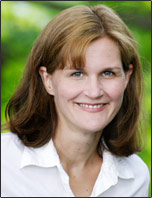Cluster analysis classifies individuals into two or more unknown groups based on a set of numerical variables.
It is related to, but distinct from, a few other multivariate techniques including discriminant Function Analysis, (more…)
Cluster analysis classifies individuals into two or more unknown groups based on a set of numerical variables.
It is related to, but distinct from, a few other multivariate techniques including discriminant Function Analysis, (more…)
Structural Equation Modeling (SEM) is a popular method to test hypothetical relationships between constructs in the social sciences. These constructs may be unobserved (a.k.a., “latent”) or  observed (a.k.a., “manifest”).
observed (a.k.a., “manifest”).
In this webinar, guest instructor Manolo Romero Escobar will describe the different types of SEM: confirmatory factor analysis, path analysis for manifest and latent variables, and latent growth modeling (i.e., the application of SEM on longitudinal data).
We’ll discuss the different terminology, the commonly used symbology, and the different ways a model can be specified, as well as how to present results and evaluate the fit of the models.
This webinar will be at a very basic conceptual level; however, it is assumed that participants have an understanding of multiple regression, interpretation of statistical tests, and methods of data screening.
What is the relationship between predictors and whether and when an event will occur?
This is what event history (a.k.a., survival) analysis tests.
There are many flavors of Event History Analysis, though, depending on how time is measured, whether events can repeat, etc.
In this webinar, we discussed many of the issues involved in measuring time, including censoring, and introduce one specific type of event history model: the logistic model for discrete time events.
Note: This training is an exclusive benefit to members of the Statistically Speaking Membership Program and part of the Stat’s Amore Trainings Series. Each Stat’s Amore Training is approximately 90 minutes long.
Complex Surveys use a sampling technique other than a simple random sample. Terms you may have heard in this area include cluster sampling, stratified sampling, oversampling, two-stage  sampling, and primary sampling unit.
sampling, and primary sampling unit.
Complex Samples require statistical methods that take the exact sampling design into account to ensure accurate results.
In this webinar, guest instructor Dr. Trent Buskirk will give you an overview of the common sampling techniques and their effects on data analysis.
Note: This training is an exclusive benefit to members of the Statistically Speaking Membership Program and part of the Stat’s Amore Trainings Series. Each Stat’s Amore Training is approximately 90 minutes long.

Trent D. Buskirk, Ph.D. is the Vice President of Statistics and Methodology, Marketing Systems Group.
Dr. Buskirk has more than 15 years of professional and academic experience in the fields of survey research, statistics, as well as SPSS, SAS, and R.
Dr. Buskirk has taught for more than a decade at the University of Nebraska and Saint Louis University where he was an Associate Professor of Biostatistics in the School of Public Health.
You'll get access to this training webinar, 130+ other stats trainings, a pathway to work through the trainings that you need — plus the expert guidance you need to build statistical skill with live Q&A sessions and an ask-a-mentor forum.
Mediation indicates that a mediator M is the causal link in the effect between an independent variable X and a dependent variable Y.
How to test mediation has become a very hot topic of statistical research in the past 10 years, and there are many new advances.
In this webinar, we’ll discuss a number of issues, new and old, in mediation, including the Baron & Kenny 4-step approach, the difference between mediation and moderation, Sobel and bootstrap tests for indirect effects. (And of course, what all these terms mean.)
Note: This training is an exclusive benefit to members of the Statistically Speaking Membership Program and part of the Stat’s Amore Trainings Series. Each Stat’s Amore Training is approximately 90 minutes long.

Karen Grace-Martin helps statistics practitioners gain an intuitive understanding of how statistics is applied to real data in research studies.
She has guided and trained researchers through their statistical analysis for over 15 years as a statistical consultant at Cornell University and through The Analysis Factor. She has master’s degrees in both applied statistics and social psychology and is an expert in SPSS and SAS.
You'll get access to this training webinar, 130+ other stats trainings, a pathway to work through the trainings that you need — plus the expert guidance you need to build statistical skill with live Q&A sessions and an ask-a-mentor forum.
Item Response Theory (IRT) refers to a family of statistical models for evaluating the design and scoring of psychometric tests, assessments and surveys. It is used on assessments in psychology,  psychometrics, education, health studies, marketing, economics and social sciences — assessments that involve categorical items (e.g., Likert items).
psychometrics, education, health studies, marketing, economics and social sciences — assessments that involve categorical items (e.g., Likert items).
In this webinar, you will learn about:
This webinar will introduce you to the basic ideas and applications of IRT, and show how you can acquire the skills necessary to conduct IRT analysis at the professional level.
 David Lillis is an applied statistician in Wellington, New Zealand.
David Lillis is an applied statistician in Wellington, New Zealand.
His company, Sigma Statistics and Research Limited, provides online instruction, face-to-face workshops on R, and coding services in R.
David holds a doctorate in applied statistics and is a frequent contributor to The Analysis Factor, including our blog series R is Not So Hard.
You'll get access to this training webinar, 130+ other stats trainings, a pathway to work through the trainings that you need — plus the expert guidance you need to build statistical skill with live Q&A sessions and an ask-a-mentor forum.